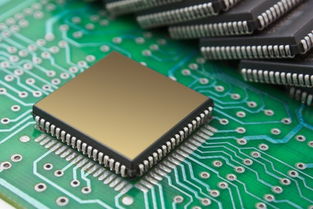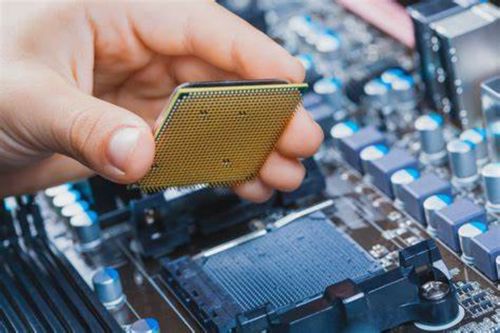
Nexperia
Integrated Circuits: The Heart of Modern Electronics
In today's digital age, integrated circuits (ICs) have become the cornerstone of modern electronic technology. From smartphones and computers to automobiles and medical devices, integrated circuits are everywhere, and their performance and innovation directly impact our daily lives and work. This article will provide an in-depth look at the importance of integrated circuits, their main types, development trends, and future prospects.
The Importance of Integrated Circuits
Integrated circuits are miniaturized electronic circuits that integrate multiple electronic components (such as transistors, resistors, and capacitors) onto a single semiconductor chip. This highly integrated design allows electronic devices to perform complex functions while significantly reducing size, power consumption, and increasing reliability. The invention of the integrated circuit is one of the most important technological breakthroughs of the 20th century, driving rapid advancements in computers, communications, consumer electronics, and many other fields.
Main Types of Integrated Circuits
-
Digital Integrated Circuits (Digital ICs)
-
Function: Process discrete digital signals and perform logical operations and data processing.
-
Common Types:
-
Microprocessors (CPUs): The core component of computers, responsible for executing program instructions.
-
Graphics Processing Units (GPUs): Used for graphics rendering and parallel computing.
-
Memory Chips: Such as DRAM (Dynamic Random Access Memory) and Flash memory, used for data storage.
-
FPGA (Field-Programmable Gate Arrays): Programmable logic devices for custom circuit design.
-
-
-
Analog Integrated Circuits (Analog ICs)
-
Function: Handle continuously varying analog signals, such as sound, images, and sensor signals.
-
Common Types:
-
Operational Amplifiers (Op-Amps): Used for signal amplification and processing.
-
Power Management ICs: For power conversion and management.
-
RF ICs (Radio Frequency Integrated Circuits): Used in wireless communications, such as the RF front end in mobile phones.
-
-
-
Mixed-Signal Integrated Circuits (Mixed-Signal ICs)
-
Function: Combine digital and analog signal processing, suitable for applications that require handling both types of signals.
-
Common Applications: Sensor interfaces, audio processing, communication devices, etc.
-
Development Trends of Integrated Circuits
-
Continuous Advancements in Manufacturing Processes
-
As technology progresses, the manufacturing processes for integrated circuits have evolved from micrometer to nanometer scales, and even smaller. For example, the most advanced manufacturing processes today have reached 5 nanometers or smaller, allowing chips to integrate more transistors in a smaller area, thereby enhancing performance and reducing power consumption.
-
-
3D Integration and Stacking Technology
-
To further increase chip density and performance, 3D integration and stacking technologies have emerged. By vertically stacking multiple chips together, the distance between chips can be significantly reduced, improving data transfer speed and efficiency.
-
-
Driving Forces of Artificial Intelligence and Machine Learning
-
With the rapid development of artificial intelligence and machine learning, the demand for high-performance computing is increasing. Specialized AI chips (such as GPUs, TPUs) and programmable logic devices (such as FPGAs) play a crucial role in this field, efficiently handling large-scale parallel computing tasks.
-
-
Internet of Things (IoT) and Sensor Fusion
-
The rise of the Internet of Things has led to the integration of sensors and microcontrollers. Low-power, high-performance sensors and microcontrollers are widely used in smart homes, smart cities, and industrial automation, enabling connectivity and communication between devices.
-
Future Outlook
The future of integrated circuit technology is full of possibilities. With the development of emerging technologies such as quantum computing and bioelectronics, integrated circuits will face new challenges and opportunities. For example, quantum chips hold the promise of ultra-high-speed computing, while bioelectronic chips may play an important role in medical diagnostics and treatment. Additionally, as 5G and 6G communication technologies evolve, integrated circuits will play an even more critical role in communication devices.
Conclusion
Integrated circuits are the heart of modern electronic technology, playing an indispensable role in various fields. From microprocessors to sensors, from power management to communication devices, the performance and innovation of integrated circuits directly impact our daily lives and work. As technology continues to advance, integrated circuits will continue to drive the development of electronic technology, providing a solid foundation for future innovations.
Popular Communities

Main Application Fields of the ISO1050DUBR Driver

Analysis of Market Demand for Digital Isolator ADM2582EBRWZ

Technical Features of PMIC DC-DC Switching Regulator TPS54202DDCR

STM32F030K6T6: A High-Performance Core Component for Embedded Systems

Analyzing the Key Features of the STM32F407VGT6 Microcontroller